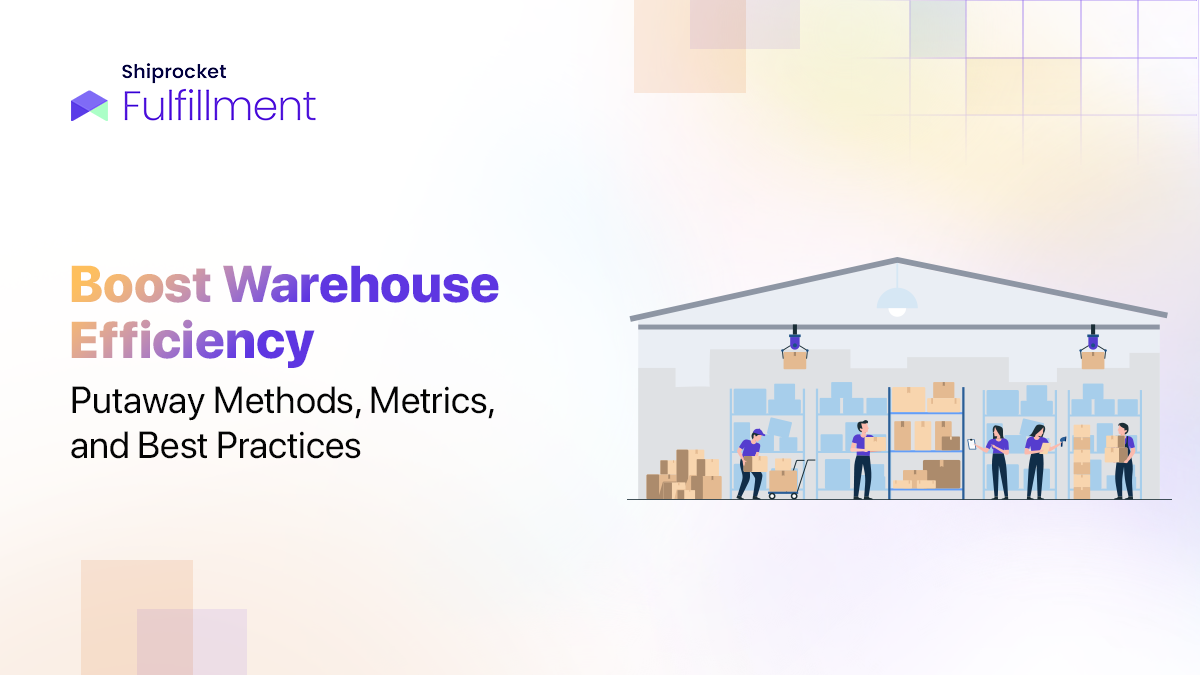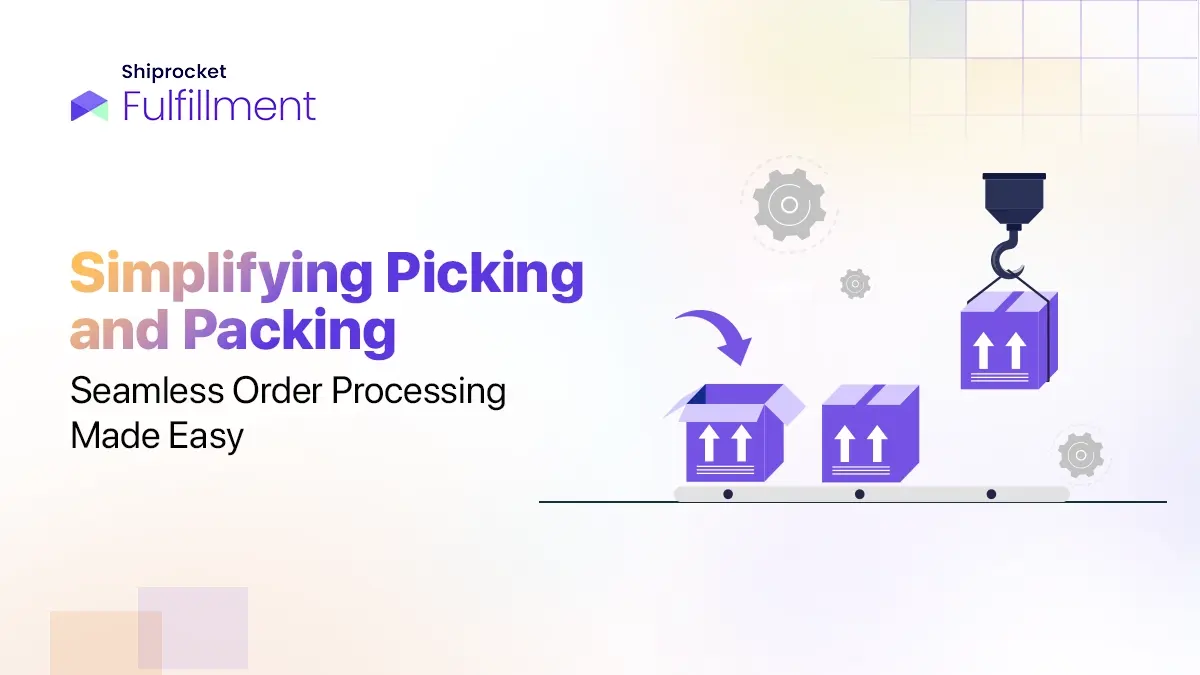eCommerce has made shopping accessible and easy. Shoppers spend countless hours scouring the internet for the perfect purchase. However, when they finally decide to purchase the product, they are greeted by the ‘out-of-stock’ message. This frustration is real for many online shoppers. Moreover, the seller might end up losing potential customers forever.

Even if this delay or roadblock is only temporary, the order completion process will be delayed substantially and it results in poor customer experience. About 34% of all orders made are shipped late because of the products being sold out or out of stock during the time of placing the order.
Inventory replenishment or simply restocking is the key to effective and smooth supply chain operations, ensuring on-time order completion. By always having the right amount of inventory to meet customer orders and knowing exactly when to restock, you can ensure order completion on time. It also enhances brand loyalty and the overall shopping experience.
Let’s find out what’s inventory replenishment, how to do it right, and more.
Know What is Inventory Replenishment?
Replenishing stock, also known as restocking or inventory replenishment, bridges the gap between storage and sales. It’s the crucial process of moving products from their designated storage locations to picking shelves, ensuring they’re readily available for fulfillment. This includes receiving eCommerce inventory from suppliers and stocking up fulfillment centers or warehouses.
When inventory replenishment is executed properly, it ensures orders are fulfilled quickly and efficiently. It is undoubtedly the most crucial patriot of logistics operations as it is the root of determining consumer satisfaction.
The entire optimisation and streamlining of a business’s cash flow are determined by how well the inventory replenishment process is planned. Losses in revenue due to stockouts or blockage in cash flow due to excessive stocking are all the aftermath of failure in timely inventory replenishment.
Peak stock levels are maintained through these sequential processes and they ensure that your products are shipping ready to meet the demand of the customers in the shortest possible time frame.
Significance of Inventory Replenishment in eCommerce Business
Stocking your inventory is the key component of whether a business makes a gain or a loss. One of the most significant reasons to replenish inventory on time is that the unavailability of a product has the potential to make or break orders. Here are a bunch of reasons that tell us why inventory replenishment is so important:
- Optimise inventory control and avoid stockouts:
Using the right inventory management plan will help you gain control over your inventory and manufacturing processes. Through a good management sequence, you will be able to always maintain your inventory levels thereby always removing the risk of a stockout.
Inventory replenishment also enables you to avoid the creation of backorders. Stocksout and backorders can result in your business losing customers. The possession of safety stock in any inventory can help you mitigate the risk of backorders.
- Optimisation of ordering and prevention of overstocking:
A well-planned inventory restocking workflow can also help a business avoid overstocking their inventory which can become unsellable when it sits too long. This is true even for food and drinks or even cosmetics. On the flip side, insufficient inventory will also cost you largely.
Untimely replenishment without understanding the trend of demand can result in dead stock that increases carrying costs. To eliminate operational costs and overstocking, employing the EOQ ( Economic Order Quantity) formula can serve to determine the optimal amount of inventory to have on hand to meet the present demand.
- Reduction of costs of shipping:
When a consumer orders many different products at the same time, there is a chance that one is out of stock in the nearest fulfillment center. However, it is available in a different one and hence you will need to send a split shipment of all of these items to complete that order.
Split shipping causes your shipping costs to increase and also wastes packing material. By correctly forecasting demand, you can determine the levels at which your inventory must be stocked. This reduces both shipping as well as final-mile delivery costs.
- Saving time and money:
Inventory management and planning for inventory replenishment saves both time and resources. Instead of paying last-minute quick delivery charges for replenishment of supplies, pre-ordering and having them on hand can save your running costs and making costs. Moreover, you will also be saving time and completing your orders as soon as possible.
How eCommerce Retailers Restock Their Inventory?
Different eCommerce businesses often employ different methods of restocking their inventory. The method chosen is dependent on the type of business model, their monthly order values, and the type of products they ship. Here are different methods that can be employed to replenish inventory:
- Precise demand forecasting:
This method is often called the “demand method.” It is a technique that ensures that stock is ordered based on the demand forecasted using different automated tools through historical data. The demand method ensures that ordering is done in such a way that all orders are fulfilled. Some eCommerce businesses only reorder stock to meet customised orders, while ensuring that they have enough stock to meet normal order demand.
An automated system accurately determines the demand forecast of a specific product through the historical data fed into it.
- Inventory level optimisation method:
This method is also termed the “top-off method.” This is employed by those businesses that have very quick-moving stock. The picking shelves process occurs when the business is in its downtime. Such business models always make sure that popular products are readily available to meet consumer demands during the rush season.
Bringing inventory to top off the primary levels minimises the chances of stockouts. The strategy serves well for businesses with demanding SKUs and limited opportunities for picking. The major drawback of this method is that it is exposed to disruptions in the supply chain. It is vulnerable and is largely dependent on supplier efficiency. By determination of precise lead times, you can overcome this issue.
- Timely order purchasing method:
It is often referred to as the periodic or cyclic method. When inventory restocking is done at regular intervals, it forms the cyclic method. Inventory levels can be restocked on a daily, monthly, weekly, bi-weekly, and quarterly basis. The frequency at which inventory replenishment is done depends on multiple factors. These include the type of product being manufactured or sold, customer demand, fluctuating market conditions, seasonal demand, etc. This type of restocking is also dependent on the size of the storage and warehouse facility. Visibility of the inventory levels must be kept in mind while using this method.
- KPI inspection and tracking method:
It is also known as the reorder point method. Here the stock levels are restocked based on the amount of material present rather than the time frame. For instance, if a warehouse has 30000 units of screws, the time to restock would be when the number of screws would reach around 7000 units. Several fully automated processes are available to trigger the reorder point method. It maintains consistency and avoids stockouts.
Inventory Replenishment: Effective Plan of Action
Accuracy is key when it comes to inventory replenishment. Having your stock levels under control and meeting customer demand with the optimal lead times is the ultimate goal. Here are some effective methods to adopt to have a well-defined inventory replenishment plan:
- The condition of optimal inventory levels:
Accurate information about stock levels can be gained through physical counts. It must be thoroughly completed and this process can be automated to avoid manual errors. Regular counts form the basis of replenishment strategies. They can also help in identifying theft and missing items. Barcode scanning, spot checks, and stock taking are a few methods of stock counting.
- Using software for forecasting demand and restocking:
While managing the restocking of a few hundred items, efficiency is a hassle and the process becomes extremely complicated. Using inventory management software to rethink order points and provide alerts when restocking is required is solely dependent on the forecast data.
- Relying on more than one supplier for restocking:
Making or breaking the business is essentially related to the restocking capabilities. Suppliers providing you with the right materials on time with the appropriate quality standards is key. By having multiple suppliers on hand, you will always have an option to fall back on for material supply to avoid out-of-stock conditions.
- Keeping an eye out on the bigger picture:
Replenishment is a tiny yet significant part of the whole inventory management process. By streamlining every single step of inventory management, from picking and receiving to packing and shipping, you will always be able to keep up with consumer demand and ensure maximum customer satisfaction.
Shiprocket: Enabling Endless eCommerce Fulfillment
Shiprocket is a logistics company that can help you with all your warehouse and inventory management solutions. Their completely automated solutions for inventory management will ensure that you never run out of your supplies and that your supply chain processes are never halted. Shiprocket provides its inventory planner that helps you save time and eliminates the need for spreadsheets. Shiprocket’s analytical tool helps you analyse your demand and gives you the forecast for the next replenishment duration while keeping an eye out for your inventory SKUs. They are a completely high-tech-enabled 3PL partner that offers the simplest and best solutions to meet all your logistics and fulfillment requirements.
Conclusion
With the increasing demand to sell products as quickly as possible and deliver them in the shortest time frame, inventory replenishment requires major upkeep and a strong management system. The art of restocking all your supplies to readily fulfill your orders and gain maximum consumer satisfaction is inventory replenishment. There are different methods of inventory replenishment that you can employ based on the type of your business model. By choosing the right restocking method, you can prevent stockouts and backorders. A well-planned inventory replenishment strategy is key to the success of any supply chain process.
Though both are key aspects of inventory management, they are completely different concepts. Inventory replenishment is when you order stock from suppliers to avoid stockouts and backorders. On the other hand, inventory control means tracking and managing stock you already have in your warehouse.
Inventory replenishment is impacted by several factors, including the type of products, lead times, customer demand, safety stock, seasonal demand, suppliers, supply chain visibility, and more.
You may face several challenges while replenishing your inventory. These include inaccurate demand forecasting, seasonal fluctuations, delays from suppliers, and lack of real-time visibility into inventory. The overall supply chain and warehouse management challenges can add to it.





